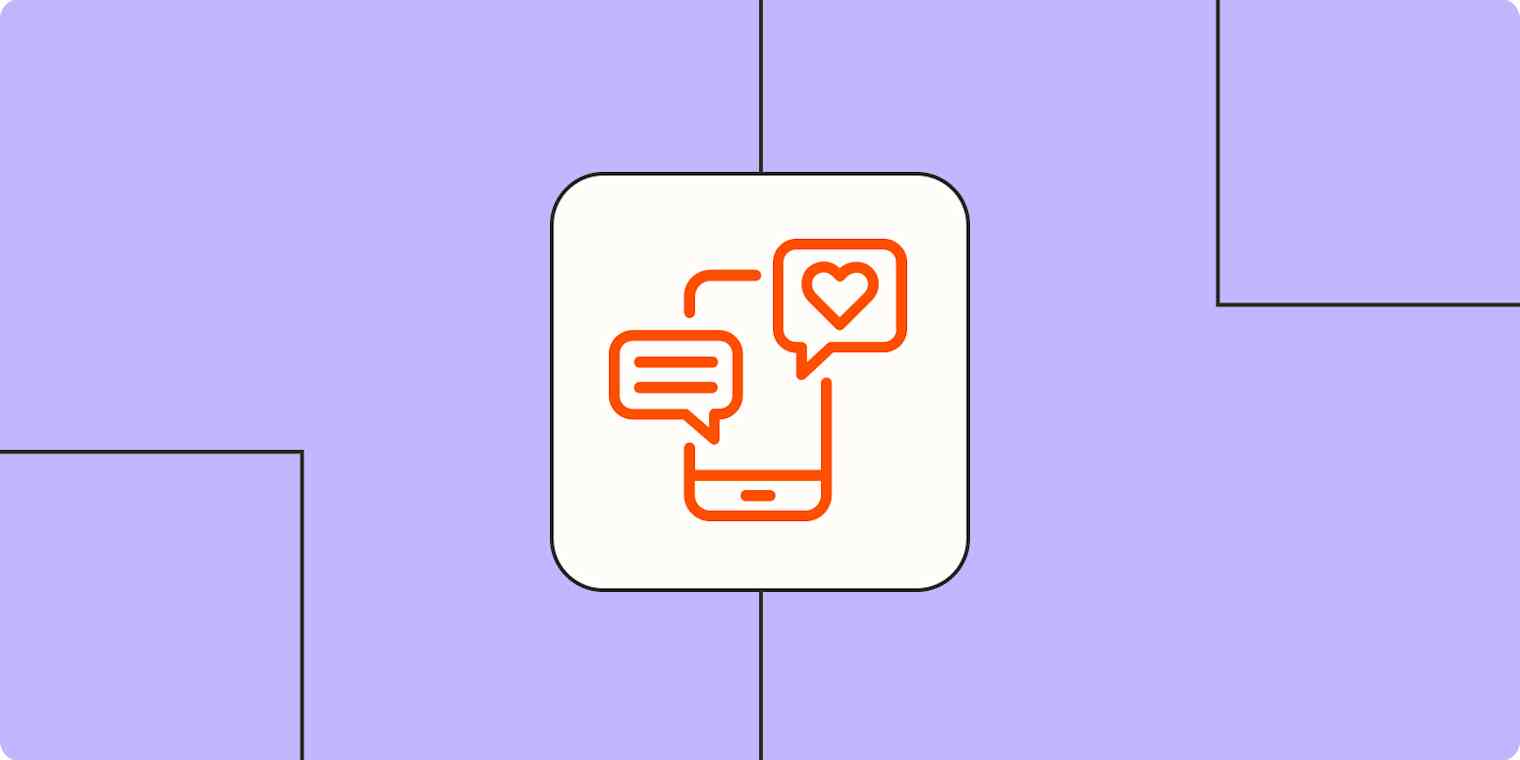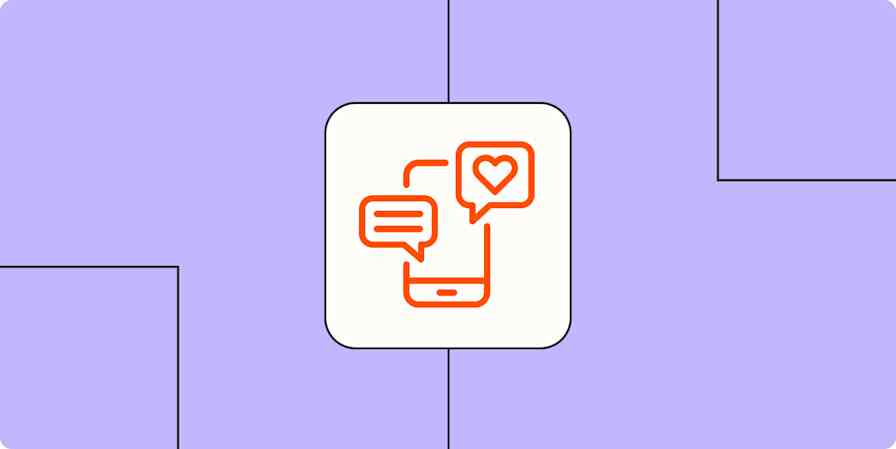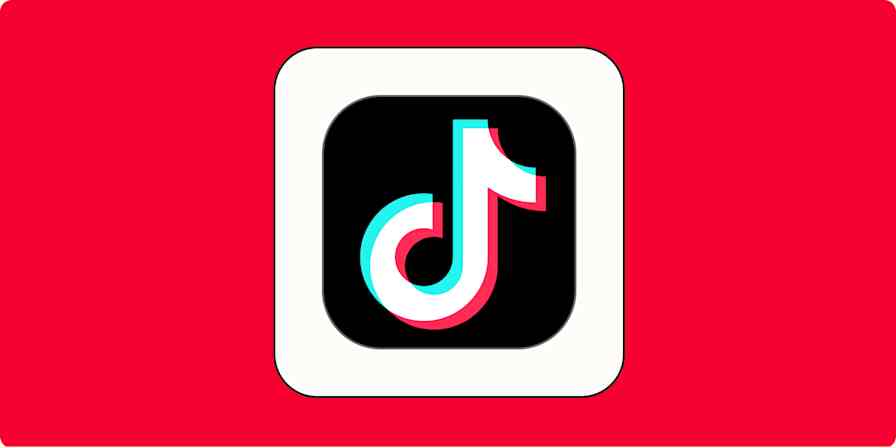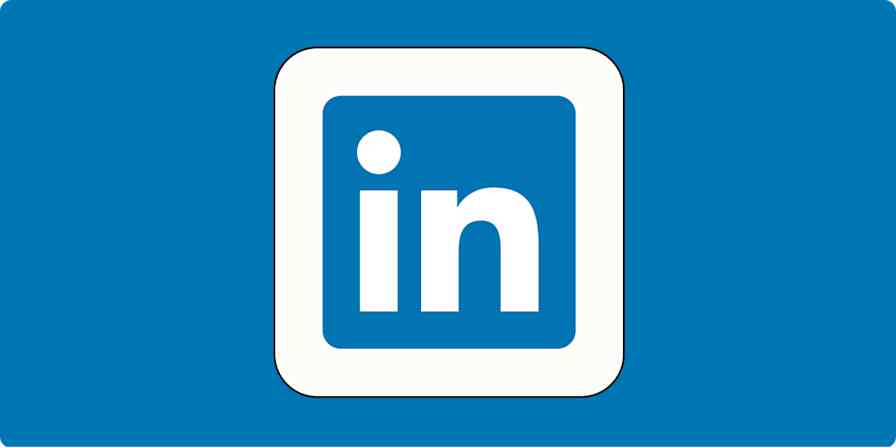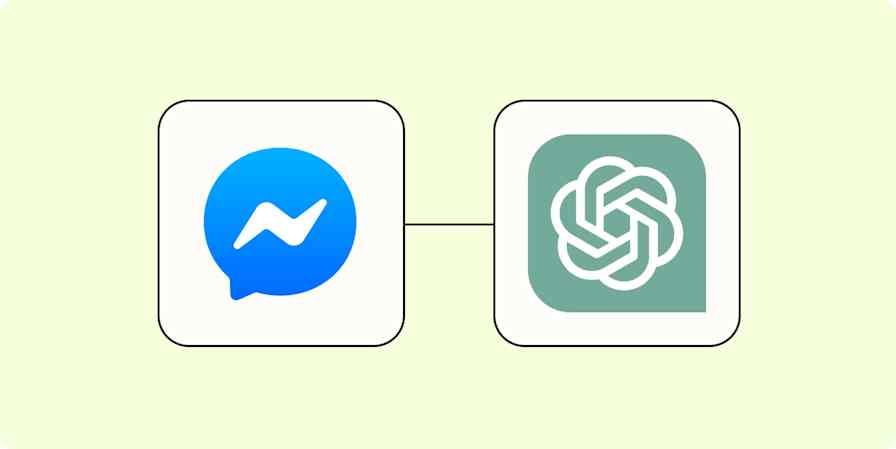You could argue that social media is fundamentally a marketing platform. Spend any amount of time on TikTok, Facebook, Instagram, or X, and you'll be served everything from outright ads to product reviews to user-generated brand-sponsored content algorithmically targeting your feed with surgical precision.
You could even argue that most users' non-commercial content is really just self-marketing, a way to promote their personal brands, their services, even their lifestyles.
As the line between content and marketing gets blurrier, social media marketing as a practice is getting even more powerful. Here's how brands are using their social platforms to promote their products and services on unsuspecting feeds like ours.
Table of contents:
11 social media marketing campaigns for inspiration
From user content to dynamic features to targeted ads to good old-fashioned effective copywriting, there are more ways than ever to do social media marketing (SMM).
Below, you'll see a few familiar names that can leverage their massive reach in their campaigns, but I also wanted to include smaller companies that are doing creative things with fewer resources. In either case, there should be something brands of any size (and with any size following) can take away from these social media marketing campaign examples.
1. Spotify's "My Spotify" campaign
Why it works: Focuses on personalization
Spotify is a master of social media engagement, in part because their product is arguably a social product in itself. What the marketing minds behind the world's biggest music streaming service understand is the universal human impulse to tell everyone how good your taste in music is.
The Wrapped campaign gets a lot of attention, but the My Spotify effort is worth learning from, too. It's basically another way to have Spotify's algorithms curate personalized music experiences that are easily shareable. The copy on the campaign page describes both the offering and the emotional value perfectly: "If you feel like your Spotify 'just gets you,' you're not alone."
International celebrities like Ewan Bremner and multiple FC Barcelona players partner with the campaign, doing that very human thing and sharing their My Spotify picks on Instagram.
I'd argue this isn't really an Instagram campaign, though. It's an every platform campaign. Music in many ways defines us, so users get to feel seen (or heard?) by sharing playlists that encapsulate the breadth of their musical tastes, which in turn encapsulates their core selves. This campaign works because it motivates users to take human actions that enrich their lives in some small, potentially braggy way, which is what social media is really all about.
2. Duolingo's "Dear Duolingo" campaign
Why it works: Drives user interaction

Including Duolingo on a "best [anything about social media]" roundup is kind of clichéd at this point, but they're just so good at it that it's still worth studying.
Their "Dear Duolingo" campaign has been going strong for over a year, and it's still getting massive engagement. Apparently, their support team gets so many asinine questions that they're worth quasi-public shaming on X and Instagram. This instance is an Instagram Reel, which allows followers to quickly scroll through images of some of the (maybe intentionally) quirkiest queries the language-learning app gets.
These get upwards of 100K likes plus tons of shares and comments, but the engagement doesn't stop there. Followers add their own quips and retorts in the comments, spurring more conversation. And while I can't verify this, the sheer ridiculousness of some of these questions leads me to believe that users see getting their questions featured on this series as a challenge to come up with something that'll stand out among the migliaia e migliaia of emails these poor support agents get.
If you want engagement, ask your following a question. If you want beaucoup engagement, post content so entertaining it makes your following compete for your attention.
3. Bumble's "It Started With Bumble" campaign
Why it works: Highlights success stories
Crowdsourcing content isn't new, but dating app Bumble showed in their "It Started With Bumble" initiative how a social media campaign can marry user engagement with publicity and a kiss of shameless publicity stunting.
Users were invited to share their romance success stories that began with a connection on the app, then Bumble highlighted their favorites of the 1,200+ entries and picked a handful of winners to tie the knot in Vegas at a branded chapel.
This works in part because it's a big win-win for everyone. If you win, you get a wedding. If you don't win, you could still be featured as part of their campaign and have your story shared with Bumble's huge following. If you're Bumble, you get more content fodder than you know what to do with.
What makes user content like this so valuable is that when Bumble shares someone's story, that person then shares that share with their own following—people who may be single but not on Bumble (hopefully not the inverse) or who aren't on the apps but may be on the market soon enough.
While your brand may or may not have the clout to get your campaigns covered in the New York Times, this kind of high-concept tactic has the potential of wedding your content to third-party publicity outlets, expanding the reach even further.
Bumble also tagged all this content with the #ItStartedWithBumble hashtag, allowing followers to get a complete digest of the campaign in a narrative that's reality TV-esque. No matter what your relationship status, this campaign was a spectacle.
4. Gosili in the Olipop comments section
Why it works: Capitalizes on bigger, non-competing brands in the same market

If you don't have the resources for a multi-month, high-profile campaign culminating in a bespoke all-expense-paid event, take a page (or straw) out of Gosili's book.
Gosili makes eco-friendly reusable silicone drinking products, so their market's Venn diagram has a significant overlap with Olipop's. Gosili has a relatively small following compared to Olipop, so engaging with bigger brands' posts and showing up high in its comments section is a sneaky way to get publicity from a market that's already been vetted to be relevant.
Scrolling deeper down the comment feed (never a great idea), it's clear Gosili isn't the only brand with this idea—because it's quick, it costs nothing, and it works. One key here is that Gosili was intentional about targeting a brand with similar customers that isn't just a non-competitor—it's a complementary one. It's not hard to imagine body- and planet-conscious people drinking their healthy not-a-soda from a reusable Gosili straw.
The other key is that Gosili is engaging in a genuine way (even if it's ultimately self-serving). They're not in the thread spamming BUY NOW AT GOSILI.COM again and again. Instead, they're responding to the post in a thoughtful way that's still on-brand.
I'll admit this isn't a perfect approach, but none is, and at least this one's free. The comments feed is never a place you want to go for a sense of help, decency, or even dignity. But the right brands in the right verticals get legitimate engagement from dedicated followers, and getting your brand with its memorable profile and a flashy pic is a quick, repeatable, (again) free social marketing tactic that can actually work.
5. LeadingResponse's stats-based LinkedIn ad
Why it works: Simple, clean design that suits the space

Working in the multi-channel customer acquisition strategy space, you'd expect an outfit like LeadingResponse to know how to do LinkedIn marketing—and they do.
What LeadingResponse understands in this LinkedIn ad is that users interested in customer acquisition in the health and financial verticals don't want fluff, filler, or flash. You'll find none of those three dreaded F's in this copy.
Even if you don't read the copy (which you're not likely to in an ad), your A-type brain moves your eye straight to the stats on the right of the post, which the visuals themselves literally point to. If you're in the industry, these stats should entice you; if you're not in the industry, you're not getting fed this ad anyway.
What I also appreciate about this ad is its layout. The CTA at the bottom is short and leaves the brand name on its own line so it's easy to see. The copy at the top highlights key points and isn't truncated by the "...see more" link. But if you do want to see more, you get the details of the offering: a reiteration of the stats and a free consultation to help get your marketing plans to draw six-figures of opportunities.
6. Letterboxd's "Four Favorites" campaign
Why it works: Iterates on a winning format
@letterboxd Four Favorites with the cast and crew of #HitMan: director Richard Linklater and stars Glen Powell, Adria Arjona, Retta, Kate Adair, Richard Robichaux, Sanjay Rao. #fyp #foryou #filmtok #movietok #letterboxd #movie #film #glenpowell #richardlinklater #fourfavorites ♬ original sound - Letterboxd
If you're not familiar with the concept of "four favorites," here's how it works: tell someone four of your favorites of something. It's a winning format because it's not as stressful as picking one thing (for anyone who's been asked their favorite song and suddenly forgotten the name of literally any song), and it provides just enough context for a short video.
I'm including Letterboxd on this list not because I'd expect everyone reading this to be able to go to a red carpet event and ask Richard Linklater and Donna from Parks and Rec for their four favorite business intelligence apps (or whatever you're selling).
But what works for Letterboxd can work for your brand, just with less famous people. The four favorites concept is great for sourcing video content you can use across social channels in just about any location where people who know your industry hang out. Think general areas like busy streets or shopping districts, or industry-specialized spaces like conferences and trade shows, then ask people for their four favorite [blank] that relates to your product, and hit record (with their consent).
Or if that's not quite your vibe, you can consider just about any replicable and not-at-all intrusive content model, like trivia, Ask Me Anything, What's in Your Purse, or that thing where people trade phones with their partners and read their texts. Just be sure it's something you can apply a framework to that's specific to your product or industry.
7. Micro Ingredients' TikTok content-as-advertisement
Why it works: Builds hype and publicizes with micro-influencer content
@jared.palmer Wally World’s Collagen price is a HUGE red flag🚩 #collagenpeptides #multicollagenpowder #biotin #vitaminc #hyaluronicacid #aging #hairloss #skinhealth ♬ original sound - JHard
To me, one of the most interesting developments about the TikTok age is the evolution of content as marketing. While the price of collagen in Walmart might be a red flag for JHard, it might be a red flag for you that there's an affiliate notice in his post description. But for users who mainline several hundred TikTok clips a day, all they see is another amazing insider beauty hack.
The way this sales mechanism works is JHard sets up an affiliate link with the TikTok Shop, where Micro Ingredients is selling their own collagen products. Users are shocked at how much cheaper and more jam-packed with peptides and hyaluronic acid MI's collagen product is than Walmart's, and they tap the Shop link to impulse buy it. JHard gets a 15% affiliate cut and an algorithm boost for the added engagement; Micro Ingredients gets a new repeat buyer.
This is essentially free marketing to a targeted audience since JHard's following is already pre-qualified to be interested in beauty and wellness products. Meanwhile, Micro Ingredients has to dedicate zero resources for content creation—JHard does it all for them since he's willing to do what people like me are not: talk into his phone screen in the middle of Walmart and subject himself roasts in the comments for his sunburn and pronunciation of the word "biotin."
With over 500K followers, JHard has a big enough audience to make a real impact for Micro Ingredients. But in a sea of lifestyle influencers, half a mil is small enough that he's also approachable even for a smaller brand. I can't say whether Micro Ingredients had anything to do with his video, but it's a solid case study for the value of approaching micro-influencers about setting up affiliate content.
8. LudoSphere's TikTok advertisement-as-content
Why it works: Seamlessly integrates an ad into content streams
@ludospheres They are so much more 🥹❤️ #universe #space #astronomy #moon #moonlamp #couple #giftideas ♬ original sound - ludospheres
To vary your TikTok strategy from having an influencer create content that functions as an advertisement, the inverse is also a good option.
In this ad, LudoSphere is playing into the complex, riveting content format we've all come to know and love—the ASMR unboxing video. (Ok, unbagging in this case.) As users scroll through their endless feed of real users talking about their favorite stuff, they hit this clip with mysterious text, clearly shot on an old phone but recorded with a professional mic for added authenticity.
Just a few seconds of anticipation later, the video cuts to these cute little space-themed sphere lamps glowing in a stranger's anonymous bedroom, overlaid by a trendy atmospheric song to round out the vibes. It's 12 seconds of cinematic perfection that feels like a real user video until you notice the video was posted by the company that makes the product.
What LudoSphere gets right is that they don't play by advertising rules like a law office commercial during daytime TV—they play by the content ecosystem's rules. It's short, it's vibey, it feels user-generated, and it's working. With 16K saves and over 9K shares, you can bet there are tens of thousands of people who either bought it, intend to buy it, or told their partner to buy it for them.
9. Craft&Ride's Reddit Onewheel giveaway
Why it works: Benefits from a related product
We’re giving away this brand new Onewheel GT S-Series Rally Edition ($4,000 value)! 😳 Enter to win in comments.
byu/craftandride inonewheel
While this is technically a multi-channel campaign that spans multiple social accounts, Craft&Ride uses Reddit to perfection to promote its Onewheel giveaway. Users just have to upvote the post, add a comment, and follow the r/craftandride subreddit, and they'll be entered to win a $4,000 prize package, including a definitely fun and not at all dangerous-looking single-wheel electric riding apparatus.
What makes this great for Reddit is that it gives Craft&Ride space to basically post a short blog describing the product and contest, dropping active hyperlinks back to their own product pages along the way. Reddit also allows Craft&Ride to be hyper-specific about their market. They don't even have to pay for targeted PPC ad spend—they just have to post to the r/onewheel subreddit and the community of Onewheel fans gives them a return of 100% pre-qualified leads.
The other genius thing is that Craft&Ride isn't even giving their own product away, but is instead giving away a related product that can lead to future purchases. This also allows them to advertise their own brand to said pre-qualified leads, who'll enter the giveaway, and even if they don't win, they still might buy from Craft&Ride later.
For context, Craft&Ride doesn't actually make Onewheel—it makes products you can use for riding a Onewheel, like wheels, bumpers, lifters, and swag. So what the brand is really doing is promoting a flashier product whose buyers would then come back to shop with later, turning them ideally into lifetime customers.
As the saying goes: Give a man one wheel, and he'll roll for a day. Give a man a Onewheel, and he'll buy your gear forever.
10. Farm Sanctuary's heartbreaking visuals on LinkedIn
Why it works: Breaks the mold in a surprising, evocative way
Imagine your surprise when you're scrolling through an infinite feed of corporate bragging, shameless professional self-promotion, and hard-hitting industry findings and then get hit in the face with this brutally cute picture of George, reminding you that you're as worthy of love as he is.
What's interesting to me about animal rescue nonprofit Farm Sanctuary's approach to social media is that its content takes basically the same tactic across platforms, attempting to (successfully) pull at heartstrings even on LinkedIn. They lean on striking photographs to do all the heavy lifting, drawing the eye and the emotions of the viewer, with the copy basically just supplementing the image. No more work or advanced social media strategy needed.
Keep in mind that this doesn't work for everyone. Farm Sanctuary can kind of get away with it because there's no industry that's specific to individual desire to help animals, so the value is essentially industry agnostic. Obviously, there are some verticals where it's more at home than a feed where corporate strategy is the norm, but even those users may be included to support the cause.
From a pure strategy perspective that's applicable on any platform, it's worth studying how Farm Sanctuary structures its posts. A big, beautiful, yet simple image is the centerpiece, daring users to look away as they scroll. The copy doesn't sell anything; it just adds emotional weight to the image. Interested users can do what I did and head to the profile to learn more about the company, where there are plenty of links and CTAs to get them to take action from there.
11. Every Can Counts' cross-promotion on X
Why it works: Leverages multiple followings to boost publicity
Colleagues from @EveryCanCounts are gearing up for the upcoming Red Bull Soapbox Race on Saturday, June 22nd, at Alexandra Palace. https://t.co/VQ1i3slc7V
— AL Circle (@Alcircle) June 18, 2024
What's better than one network? Three. The answer is three, in this very specific instance.
When Every Can Counts, so does every tweet viewer (or whatever X calls a tweet). This U.K.-based initiative to promote aluminum recycling went all-out to show the value of the humble single-use drinking vessel, building a soapbox race car from recycled cans, decking out their driver in a jacket of cans, and competing in the Red Bull Soapbox Race.
All that effort would only go as far as publicizing the organization to people who attended the race, so ECC went to the added effort of creating dozens of social media posts around the initiative, gaining extra traction from AL Circle, a partner "Virtual Aluminium Ecosystem" (spelled in the Queen's English), who brought the story to their own related readership.
On top of that partnership, ECC benefited from social publicity from the race itself. The hashtag #RedBullSoapboxRace collects these posts into the greater conversation about the event while also gaining potential highlights from the main Red Bull Soapbox Race London X account and even the Red Bull account itself.
This is a great example of how you can get the most mileage out of off-the-screen promotional efforts like event marketing by turning those efforts into content opportunities and applying strategic partnerships. This race didn't come from nowhere—Red Bull, after all, comes in an aluminum can, and the event itself is likely lousy with potential for advertising the organization.
Takeaways from the best examples of social media marketing

If there's one thing nearly all these examples can point to about social media marketing content, it's that there's no one thing that works for every brand for every product to reach every audience every time.
No social media marketing campaign is a monolith. And while each of these strategies has its value, it's also not feasible to throw every single one of them into every campaign. If you've ever mixed every crayon in the crayon box together hoping for a magical new color, you know strategic combination almost always yields more striking results.
It all starts with understanding the intersection between your brand, your product, and your market. Partnerships should make sense (don't boost a competitor or a brand with conflicting markets), tactics shouldn't feel forced (you wouldn't see Nike doing a Reddit giveaway or self-promoting in Instagram comments), and the effort should be worth the return (a month-long campaign resulting in one share and two comments probably wasn't worth it).
Remember to align these strategies with sales KPIs and monitor analytics both on social and on your site to monitor how campaigns are (or are not) resulting in specific actions that result in useful outcomes like product page engagement, conversions, and sales.
Automate social media marketing with Zapier
If executing the perfect campaign based on these social media marketing strategy examples sounds like a lot of work, you don't have to do it all. Social media automation can help you perform essential SMM tasks like using AI to create content and automatically cross-posting social campaigns. Here are a few pre-made workflows to get you started.
Create Hootsuite messages whenever new labels are added to Trello cards
Zapier is a no-code automation tool that lets you connect your apps into automated workflows, so that every person and every business can move forward at growth speed. Learn more about how it works.
Social media marketing FAQ
Still want to know more about social media marketing? Here are answers to some common questions.
What is social media marketing?
Social media marketing is any effort a company makes to publicize their products or brand via social channels like Facebook, X, LinkedIn, Instagram, TikTok, and Reddit. This is usually done with paid ads, promotional posts, and calls to action, but can also include strategies like (in case you skipped this whole post) interacting with brands, partnering with influencers, and promoting third-party giveaways.
What are the types of social media marketing?
There are countless types of social media marketing strategies, and creative marketers can continue finding new ways to use diverse platforms to promote their brands. But some of the most common types of social media marketing are paid ads, promotional posts, influencer marketing, audience engagement, branded partnerships, and company updates.
Related reading:
